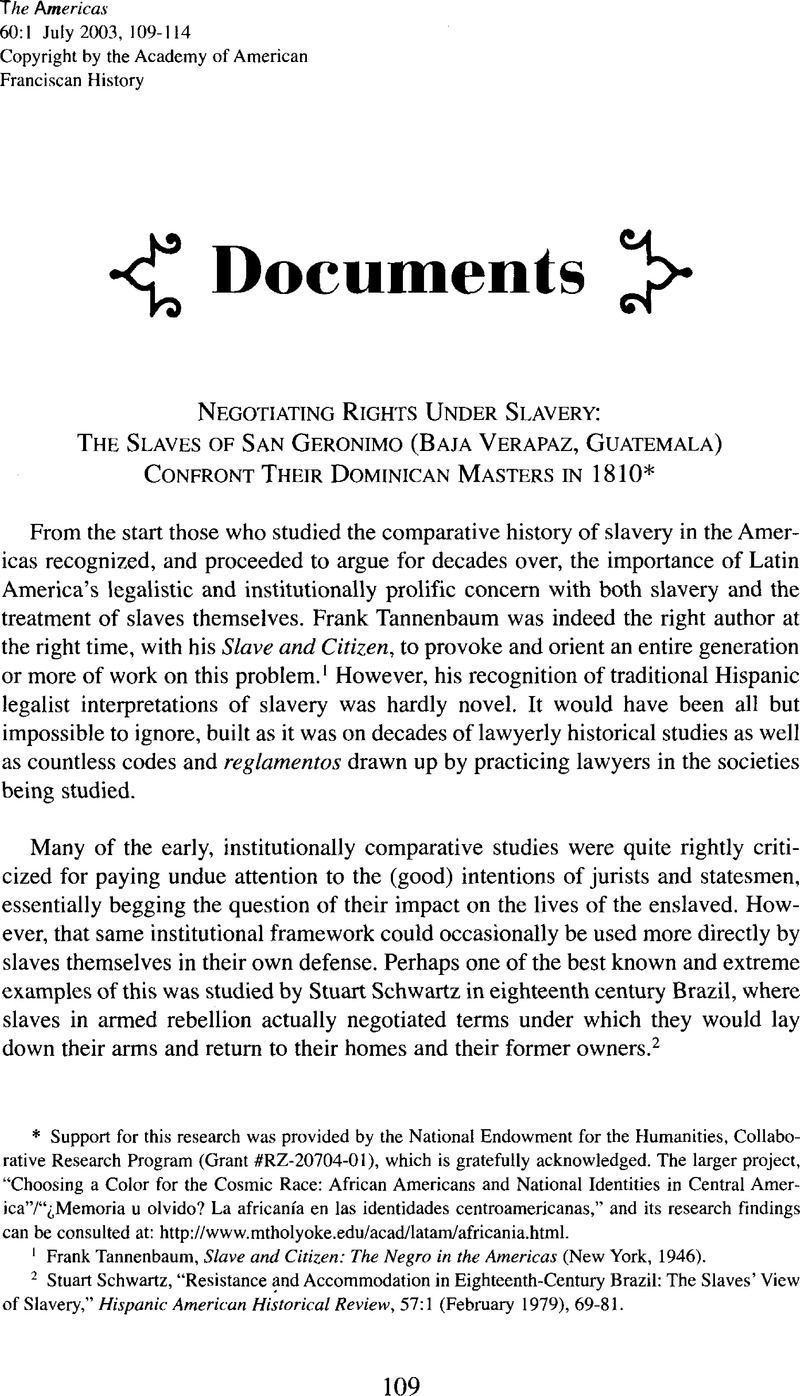Published online by Cambridge University Press: 11 December 2015

Support for this research was provided by the National Endowment for the Humanities, Collaborative Research Program (Grant #RZ-20704-01), which is gratefully acknowledged. The larger project, “Choosing a Color for the Cosmic Race: African Americans and National Identities in Central America”/“¿ Memoria u olvido? La africanía en las identidades centroamericanas,” and its research findings can be consulted at: http://www.mtholyoke.edu/acad/latam/africania.html.
1 Tannenbaum, Frank, Slave and Citizen: The Negro in the Americas (New York, 1946).Google Scholar
2 Schwartz, Stuart, “Resistance and Accommodation in Eighteenth-Century Brazil: The Slaves’ View of Slavery,” Hispanic American Historical Review, 57:1 (February 1979), 69–81.CrossRefGoogle Scholar
3 The best descriptions of sugar-based agriculture in Guatemala can be found in Soria, Julio Pinto, El Valle Central de Guatemala (1524–1821): un análisis acerca del origen histórico-económico del regionalismo en Centroamérica (Universidad de San Carlos: Cuadernos de Investigación, No. 7, 1987);Google Scholar and Lujan Muñoz, Jorge, Agricultura, mercado y sociedad en el corregimiento del Valle de Guatemala, 1670–80 (Universidad de San Carlos, Cuadernos de Investigación, 2–88, 1988).Google Scholar
4 See Archivo General de Centroamérica (AGCA), Al, Legajo 105, expediente 2218 (1789) for a lengthy complaint by Dominican authorities against don Francsico Carbonel who had rented their Anís plantation in Amatitlán for a period of nine years, slaves and all.
5 Belaubre, Christophe, “Poder y redes sociales en Centroamérica: El caso de la Orden de los Dominicos (1757–1829),” Mesoamérica 41 (junio de 2001), 31–76;Google Scholar shows in great detail how the Dominican financial empire was maintained in both Guatemala and Chiapas prior to their expulsión by the government of Francisco Morazán.
6 See Gudmundson, , “Los afro-guatemaltecos a fines de la Colonia: Las haciendas dominicas de San Gerónimo y Amatitlán,” in Càceres, Rina, ed., Las rutas de la esclavitud en África y América Latina (San José: Editorial de la Universidad de Costa Rica, 2001), pp. 251–68Google Scholar for further analysis of this late Colonial population. For images of San Gerónimo today and the remains of the Hacienda visit the web site mentioned above.
7 AGCA, A3 Legajo 2543, expediente 37384 (1811).
8 For the story of San Gerónimo in the nineteenth and early twentieth centuries see, Gudmundson, , “Firewater, Desire, and the Militiamen's Christmas Eve in San Gerónimo, Baja Verapaz, 1892,” Hispanic American Historical Review and Mesoamérica, forthcoming.Google Scholar